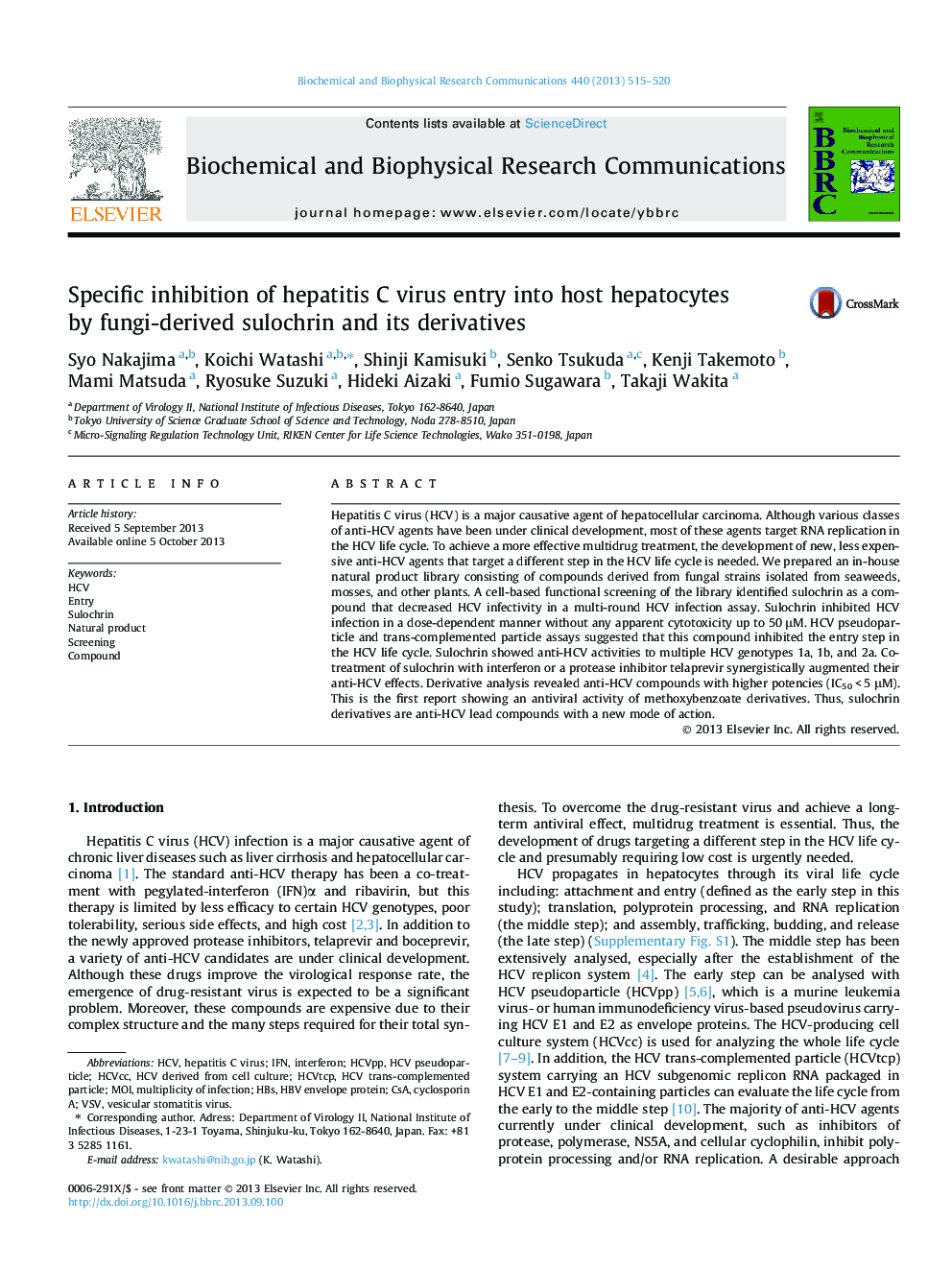| Article ID | Journal | Published Year | Pages | File Type |
|---|---|---|---|---|
| 8297665 | Biochemical and Biophysical Research Communications | 2013 | 6 Pages |
Abstract
Hepatitis C virus (HCV) is a major causative agent of hepatocellular carcinoma. Although various classes of anti-HCV agents have been under clinical development, most of these agents target RNA replication in the HCV life cycle. To achieve a more effective multidrug treatment, the development of new, less expensive anti-HCV agents that target a different step in the HCV life cycle is needed. We prepared an in-house natural product library consisting of compounds derived from fungal strains isolated from seaweeds, mosses, and other plants. A cell-based functional screening of the library identified sulochrin as a compound that decreased HCV infectivity in a multi-round HCV infection assay. Sulochrin inhibited HCV infection in a dose-dependent manner without any apparent cytotoxicity up to 50 μM. HCV pseudoparticle and trans-complemented particle assays suggested that this compound inhibited the entry step in the HCV life cycle. Sulochrin showed anti-HCV activities to multiple HCV genotypes 1a, 1b, and 2a. Co-treatment of sulochrin with interferon or a protease inhibitor telaprevir synergistically augmented their anti-HCV effects. Derivative analysis revealed anti-HCV compounds with higher potencies (IC50 < 5 μM). This is the first report showing an antiviral activity of methoxybenzoate derivatives. Thus, sulochrin derivatives are anti-HCV lead compounds with a new mode of action.
Keywords
Related Topics
Life Sciences
Biochemistry, Genetics and Molecular Biology
Biochemistry
Authors
Syo Nakajima, Koichi Watashi, Shinji Kamisuki, Senko Tsukuda, Kenji Takemoto, Mami Matsuda, Ryosuke Suzuki, Hideki Aizaki, Fumio Sugawara, Takaji Wakita,
